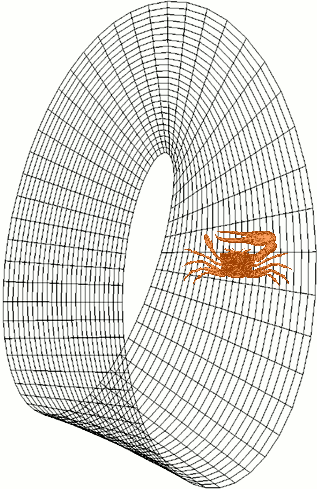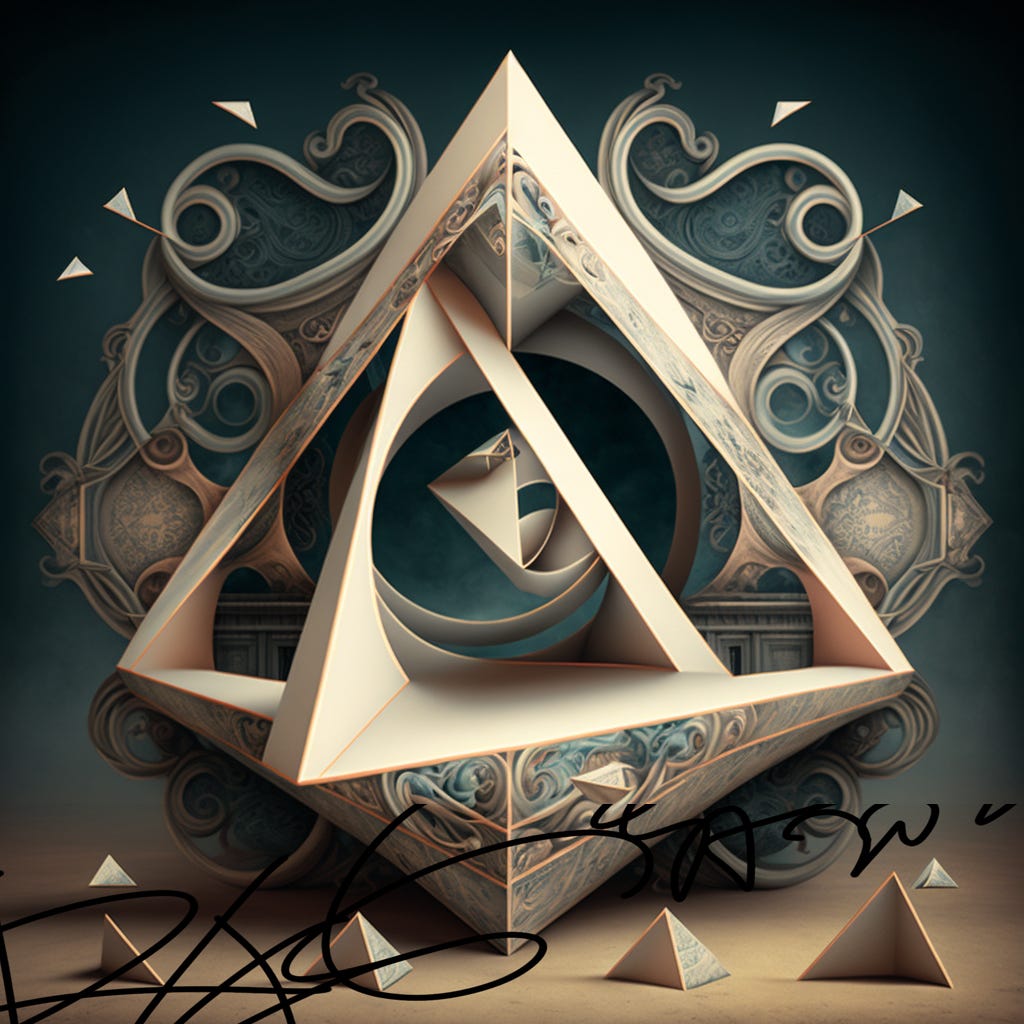Exploring the Paradoxes of Paradoxical Geometry, For New Ideas
Exploring the Paradoxes of Paradoxical Geometry, For New Ideas
Spatial arrangements that seem to defy logic.
“You don’t see something until you have the right metaphor to let you perceive it”
― James Gleick, Chaos: Making a New Science.
Paradoxical geometry is a term used to describe certain types of geometries or spatial arrangements that seem to defy logic or common sense.
Paradoxical Abstract Geometry.

These types of geometries may involve impossible shapes, self-intersecting figures, or other types of paradoxes that challenge our understanding of space and dimension.
One well-known example of paradoxical geometry is…
The Penrose triangle.
It is a three-dimensional figure that appears to have impossible angles and impossible lines of symmetry.
The Penrose triangle, also known as the Penrose tribar, the impossible triangle, is a triangular impossible object, an optical illusion consisting of an object which can be shown in a perspective drawing but cannot exist as a solid object.

A rotating Penrose triangle model to show illusion. At the moment of illusion, there appears to be a pair of purple faces (one partially occluded) joined at right angles, but these are actually parallel faces, and the partially occluded face is internal, not external.
The Penrose triangle has been used as a symbol in art and literature to represent the idea of something that defies logic or reason.
The paradoxical geometry of the Möbius strip.
A 2D object traversing once around the Möbius strip returns in mirrored form.

A one-sided surface with no beginning or end, and the Klein bottle, a shape that seems to have no inside or outside.
These and other paradoxical geometries have been explored and studied by mathematicians and scientists for centuries, and have inspired many artistic and philosophical reflections on the nature of space and reality.
In addition to the Penrose triangle and other famous examples of paradoxical geometry, there are many other strange and fascinating geometries that have been explored by mathematicians and scientists. For example…
The Escher’s Circle Limit III.

This is a famous woodcut print by the artist M.C. Escher, which depicts a circle of fish that seem to be infinitely repeating in a circular pattern.
Circle Limit III is a woodcut made in 1959 by the Dutch artist M. C. Escher, in which “strings of fish shoot up like rockets from infinitely far away” and then “fall back again whence they came”.
The image creates the illusion of a two-dimensional space that is both finite and infinite at the same time.
Paradoxical 3D Abstract Geometry.

The fourth dimension.
While the concept of the fourth dimension is not necessarily paradoxical, it can be difficult for our three-dimensional brains to wrap our heads around the idea of a fourth dimension of space.
Mathematicians and scientists have explored the concept of the fourth dimension and have even attempted to visualize it.
Non-Euclidean geometries.
Euclidean geometry is the type of geometry that we are most familiar with, and it is based on the idea that lines are infinitely long and parallel lines never intersect.
However, there are other types of geometries, such as hyperbolic geometry and elliptical geometry, that do not follow these rules. These geometries can lead to strange and counterintuitive results, such as the fact that in hyperbolic geometry, the sum of the angles in a triangle can be less than 180 degrees.
In mathematical logic.
Russell’s paradox (also known as Russell’s antinomy) is a set-theoretic paradox discovered by the British philosopher and mathematician Bertrand Russell in 1901.
Russell’s paradox shows that every set theory that contains an unrestricted comprehension principle leads to contradictions.
Paradoxical geometry and other strange geometries can be challenging to understand and can often seem like they defy common sense.
But they have inspired many important mathematical discoveries and have helped to deepen our understanding of the nature of space and the universe.
If you’re not a Medium member, join here to read unlimited articles.
Comments
Post a Comment